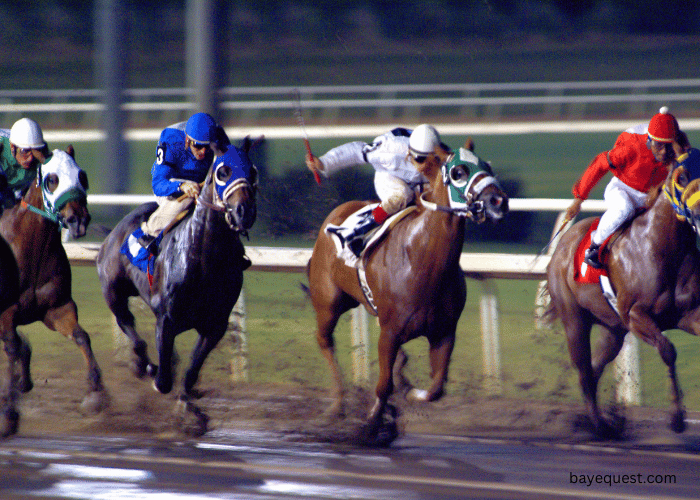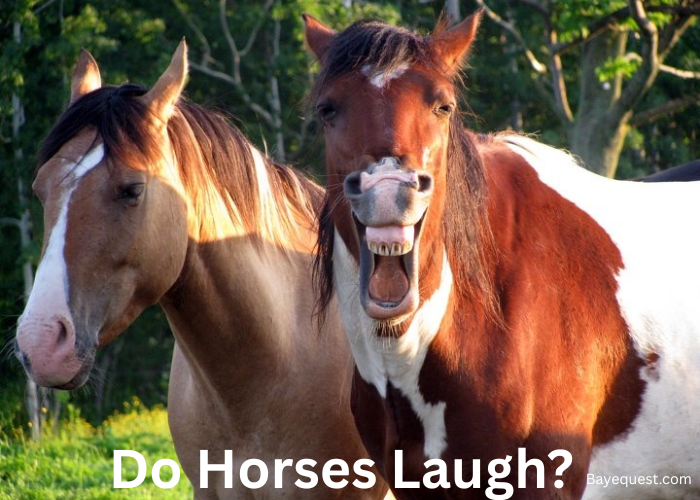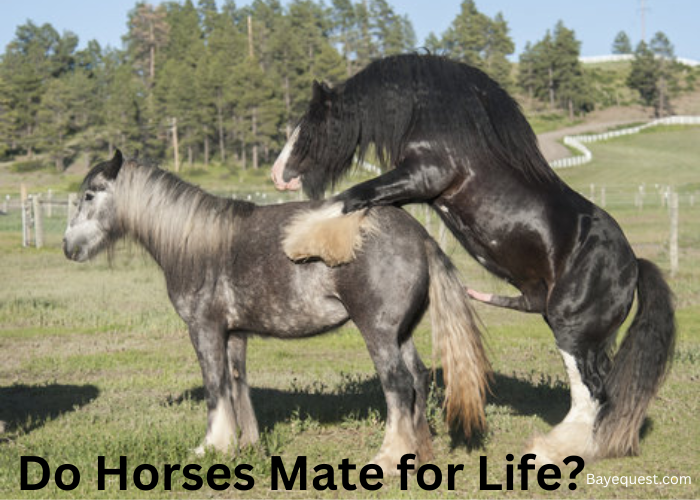Racehorses come in all shapes, sizes, and, yes, genders. Some folks assume it’s all about the stallions charging ahead.
But here’s the twist—mares and fillies can give them a run for their money. Both male and female horses bring their own strengths to the track.
One might have the speed, another the stamina, and sometimes, it’s all about heart. So, what makes one stand out over the other?
Does gender really matter when they hit the finish line? Let’s break it down and find out.
Are Race Horses Male or Female? Key Takeaway
Racehorses can be both male and female. Male horses, like stallions and geldings, are more common in racing due to their strength and stamina. Female horses, called mares and fillies, also race and can be equally competitive. Each gender brings unique strengths to the track, making every race exciting and unpredictable.
What is Horse Racing?
Horse racing is a competitive sport where horses, ridden by jockeys, race against each other over a set distance on a track. The goal is simple: be the first to cross the finish line.
It’s one of the oldest sports in the world and has evolved into various forms.
Beyond the excitement of speed and strategy, horse racing is also a major part of the gambling and entertainment industry.
Races can vary in length, surface type, and rules, but the thrill remains the same.
How Old are Race Horses?
Racehorses typically start their racing careers when they are about 2 years old. At this age, they are considered juveniles.
For thoroughbred racing, which is the most popular type, horses can continue racing into their older years, but most peak between the ages of 3 to 5.
The exact age can vary based on the breed and type of racing.
For flat racing, horses often start racing at 2 years old and reach their peak at around 3 to 4 years old.
For jump racing (Steeplechasing), horses may start a bit older, around 4 to 5 years, and can race well into their teens.
After their prime racing years, many horses retire to become breeding stallions or broodmares.
The Gender Gap: Are Race Horses Male or Female?
In horse racing, you’ll see both males and females on the track. Stallions and geldings often get the spotlight. They have the power and stamina.
But mares and fillies are no pushovers. They bring speed, agility, and heart.
The gender gap isn’t about who’s better; it’s about roles. Males are raced more often, while females are sometimes saved for breeding.
But don’t be fooled—mares can beat the boys and often do. In the end, it’s not just about gender; it’s about the horse, the training, and the race itself.
Do Gender Differences Matter in Racing?
Gender differences play a role in racing, but not always in the way you might think.
Male horses—stallions and geldings—are often seen more in races. They have muscle mass and endurance that give them an edge. But that doesn’t mean they’re always the fastest or the best.
Female horses, like mares and fillies, can be just as competitive. They’ve got speed, agility, and plenty of fight. Sometimes, they even outrun the boys.
It comes down to the individual horse, the training, the strategy, and the day of the race.
Why are Most Racing Horses Male?
Most racehorses are male, but why is that? Let’s check out a few reasons:
Physical attributes
Male horses have a natural build that gives them an edge. They are often bigger and have more muscle mass, which means more power and stamina on the track.
This strength helps them maintain speed over longer distances. They are fast and able to hold that speed from start to finish.
That’s why you’ll see more males racing. Their bodies are built for the grind, giving them the extra push needed when it counts the most.
Hormone interference
For female horses, hormones can cause a bit of trouble. Mares can have mood swings and changes in behavior due to their cycles.
This can affect their focus and performance during a race. It’s like a wildcard, sometimes they’re unstoppable, and other times, not so much.
Male horses don’t have this issue. They’re more predictable on the track, making them a safer bet for racing.
That’s one reason why owners often lean towards males for competition.
Breeding reasons
Mares have another important role—breeding. A top-performing mare is often retired early to have foals, passing on her winning genes.
This is where her value truly shines. Owners don’t want to risk injury or burnout by racing her too long.
On the other hand, stallions can race longer and still be used for breeding later. So, you see more males on the track, while many mares step away to help create the next generation of champions.
Temperament and focus
Male horses, especially geldings, tend to have a steadier temperament. Geldings, who are castrated, don’t have the distractions that stallions do.
They focus better and handle the noise, crowds, and stress of racing without getting too riled up. This calmness is key in high-pressure situations.
It makes them reliable, consistent performers. A focused horse is a fast horse, and that’s why males often get the nod.
Male Vs Female Race Horses Percentage
In horse racing, the percentage of male versus female racehorses tends to favor males.
Around 65-75% of racehorses are males—stallions and geldings—due to their physical strength, endurance, and focus. The remaining 25-35% are females—mares and fillies.
These numbers can vary by country, race type, and specific stables. However, the trend leans heavily toward males being the majority on the track.
Mixed Gender Races and Specific Races for Each Gender
In horse racing, there are both mixed-gender races and races specifically for each gender.
Mixed-gender races allow both males and females to compete against each other. These are the most common type of races, like the Kentucky Derby.
On the other hand, there are gender-specific races designed just for males or females. For example, the Kentucky Oaks is exclusively for fillies (young female horses).
These races consider physical differences, allowing each horse gender to shine in their own space while still showcasing top talent.
Are Horse Riders Male or Female?
Horse riders, or jockeys, can be both male and female. However, the sport has traditionally been dominated by male jockeys.
Men make up the majority due to the physical demands of the job and historical gender norms in the sport. The average jockey’s weight and height, combined with the need for strong control over powerful racehorses, have led to more men entering the field.
That said, female jockeys are on the rise and breaking barriers. Riders like Julie Krone, Hollie Doyle, and Rachael Blackmore have shown that women can compete at the highest levels and win major races.
See also: Professional Jockey Salary.
What Do You Call Male Racehorses?
Male racehorses go by a few names.
If they’re young, they’re called colts. Colts are usually under four years old and just starting to show what they’ve got on the track.
Then you have stallions. These are the big, strong males that haven’t been castrated. They’re powerful and are often used for breeding after racing.
And finally, there are geldings. These are males that have been castrated. Geldings are steady and focused, making them great for racing because they don’t get distracted.
What Do You Call Female Racehorses?
Female racehorses have their own names too.
If they’re young, they’re called fillies. Fillies are usually under four years old, full of energy, and ready to prove themselves on the track.
When they get older, they’re called mares. Mares are adult females, and they’re often both racers and future mothers of champions.
They can race just as hard as the males and often bring speed and heart to the competition. Whether they’re fillies or mares, female racehorses have their own style and strength that makes them a force to watch.
Are Male Racehorses Faster Than Females?
Male racehorses are often considered faster than females, but it’s not always that simple. Males, like stallions and geldings, have more muscle mass and strength, which can give them an edge in speed and endurance.
This physical advantage is why you see more males in the big races. But don’t count out the females.
Mares and fillies can be just as fast, especially over shorter distances where agility and quick bursts of speed matter.
In the end, speed isn’t just about gender. It’s about training, health, and the individual horse’s spirit on race day.
Notable Female Contenders
Some female racehorses have left their mark and then some.
Take Zenyatta—she’s a legend. She had a powerful stride, and that’s why she qualified to be on the list of the most famous racehorses in the world. Zenyatta raced against the boys and often beat them, showing heart and power.
Then there’s Black Caviar from Australia. She’s all about speed and undefeated in her career. Over 25 races, she never lost, proving she’s one of the fastest to ever hit the track.
And we can’t forget Ruffian. She was pure grit and talent. In the ’70s, she dominated her races, beating everyone she faced until a tragic injury cut her career short.
These mares didn’t just compete; they became icons.
Read also: Racehorses Hall of Fame.
Are Racehorses Male or Female? FAQs
How does handicapping work with males vs females?
In horse racing, handicapping tries to level the field. Males and females often race together, but females might carry slightly less weight than males. This weight difference helps balance out the physical advantage that male horses often have. It’s a way to give mares and fillies a fair shot against the boys, making the race more competitive.
Can a mare compete in the same race as a stallion?
Yes, a mare can compete against a stallion in many races. Most races are mixed-gender, meaning both mares and stallions can run against each other. Mares have won big races against stallions, proving they can hold their own on the track.
Why are there more male horses in racing?
There are more male horses in racing because of their physical build and fewer hormonal changes. Stallions and geldings often have more muscle and stamina, making them more suited for long, tough races. Plus, mares have breeding value. Once a mare shows promise, she’s often retired early to become a broodmare, passing on her strong genes.
So, Are All Race Horses Male? Conclusion
No. Not all race horses are male. Each brings something special to the track.
Males often race longer and stronger, but females bring speed, heart, and sometimes even the surprise win. It’s not just about muscles or breeding; it’s about the horse’s spirit and the training behind it.
Whether it’s a stallion, gelding, filly, or mare, every horse has a shot at greatness. In the end, the best racehorse isn’t defined by gender—it’s defined by the race they run.








